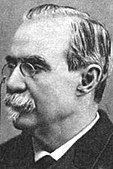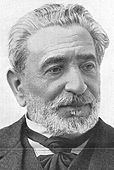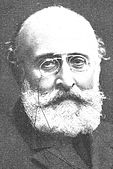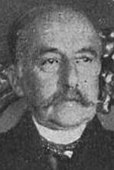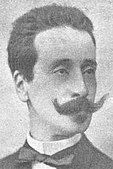1896 Spanish general election
| ||||||||||||||||||||||||||||||||||||||||||||||||||||||||||||||||||||
All 447 seats in the Congress of Deputies and 180 (of 360) seats in the Senate 224 seats needed for a majority in the Congress of Deputies | ||||||||||||||||||||||||||||||||||||||||||||||||||||||||||||||||||||
|---|---|---|---|---|---|---|---|---|---|---|---|---|---|---|---|---|---|---|---|---|---|---|---|---|---|---|---|---|---|---|---|---|---|---|---|---|---|---|---|---|---|---|---|---|---|---|---|---|---|---|---|---|---|---|---|---|---|---|---|---|---|---|---|---|---|---|---|---|
| ||||||||||||||||||||||||||||||||||||||||||||||||||||||||||||||||||||
| ||||||||||||||||||||||||||||||||||||||||||||||||||||||||||||||||||||
The 1896 Spanish general election was held on Sunday, 12 April (for the Congress of Deputies)[a] and on Sunday, 26 April 1896 (for the Senate), to elect the 7th Cortes of the Kingdom of Spain in the Restoration period. All 445 seats in the Congress of Deputies (plus two special districts) were up for election, as well as 180 of 360 seats in the Senate.
The previous Liberal government of Práxedes Mateo Sagasta had resigned in March 1895, following the outbreak of revolution in Cuba and a period dominated by social conflict and war in Morocco. Antonio Cánovas del Castillo of the Conservative Party was tasked to form a new government, but the general election was delayed by over a year until their feasibility in Cuba could be ensured. The election resulted in a large majority for the Conservatives amidst the boycott of most pro-republican parties.
This would be the last election to be contested by Cánovas, as he would be assassinated while in office in August 1897 by an anarchist, Michele Angiolillo.
Overview
[edit]Electoral system
[edit]The Spanish Cortes were envisaged as "co-legislative bodies", based on a nearly perfect bicameral system. Both the Congress of Deputies and the Senate had legislative, control and budgetary functions, sharing equal powers except for laws on contributions or public credit, where the Congress had preeminence.[4][5] Voting for the Cortes was on the basis of universal manhood suffrage, which comprised all national males over 25 years of age, having at least a two-year residency in a municipality and in full enjoyment of their civil rights.[6][7] In Cuba and Puerto Rico voting was on the basis of censitary suffrage, with a minimum taxpayer quota—of $5 in Cuba and $10 in Puerto Rico—per territorial contribution or per industrial or trade subsidy (paid at the time of registering for voting), having a particular position (royal academy numerary members; ecclesiastic individuals; active, unemployed or retired public employees; military personnel; widely recognized painters and sculptors; public teachers; etc.), or having at least a two-year residency in a municipality, provided that an educational or professional capacity could be proven.[8][9][10][11]
For the Congress of Deputies, 116 seats were elected using a partial block voting system in 34 multi-member constituencies, with the remaining 329 being elected under a one-round first-past-the-post system in single-member districts. Candidates winning a plurality in each constituency were elected. In constituencies electing eight seats or more, electors could vote for no more than three candidates less than the number of seats to be allocated; in those with more than four seats and up to eight, for no more than two less; in those with more than one seat and up to four, for no more than one less; and for one candidate in single-member districts. The Congress was entitled to one member per each 50,000 inhabitants, with each multi-member constituency being allocated a fixed number of seats. Additionally, literary universities, economic societies of Friends of the Country and officially organized chambers of commerce, industry and agriculture were entitled to one seat per each 5,000 registered voters that they comprised, which resulted in two additional special districts for the 1896 election. The law also provided for by-elections to fill seats vacated throughout the legislature.[4][10][12][13]
As a result of the aforementioned allocation, each Congress multi-member constituency was entitled the following seats:[12][14][15][16][17][18][19]
| Seats | Constituencies |
|---|---|
| 8 | Madrid |
| 6 | Havana |
| 5 | Barcelona, Palma |
| 4 | Santa Clara, Seville |
| 3 | Alicante, Almería, Badajoz, Burgos, Cádiz, Cartagena, Córdoba, Granada, Jaén, Jerez de la Frontera, La Coruña, Lugo, Málaga, Matanzas, Mayagüez, Murcia, Oviedo, Pamplona, Pinar del Río, Ponce, San Juan Bautista, Santa Cruz de Tenerife, Santander, Santiago de Cuba, Tarragona, Valencia, Valladolid, Zaragoza |
For the Senate, 180 seats were indirectly elected by the local councils and major taxpayers, with electors voting for delegates instead of senators. Elected delegates—equivalent in number to one-sixth of the councillors in each local council—would then vote for senators using a write-in, two-round majority voting system. The provinces of Álava, Albacete, Ávila, Biscay, Cuenca, Guadalajara, Guipúzcoa, Huelva, Logroño, Matanzas, Palencia, Pinar del Río, Puerto Príncipe, Santa Clara, Santander, Santiago de Cuba, Segovia, Soria, Teruel, Valladolid and Zamora were allocated two seats each, whereas each of the remaining provinces was allocated three seats, for a total of 147. The remaining 33 were allocated to special districts comprising a number of institutions, electing one seat each—the archdioceses of Burgos, Granada, Santiago de Compostela, Santiago de Cuba, Seville, Tarragona, Toledo, Valencia, Valladolid and Zaragoza; the Royal Spanish Academy; the royal academies of History, Fine Arts of San Fernando, Exact and Natural Sciences, Moral and Political Sciences and Medicine; the universities of Madrid, Barcelona, Granada, Havana, Oviedo, Salamanca, Santiago, Seville, Valencia, Valladolid and Zaragoza; and the economic societies of Friends of the Country from Madrid, Barcelona, Havana–Puerto Rico, León, Seville and Valencia. An additional 180 seats comprised senators in their own right—the Monarch's offspring and the heir apparent once coming of age; Grandees of Spain of the first class; Captain Generals of the Army and the Navy Admiral; the Patriarch of the Indies and archbishops; and the presidents of the Council of State, the Supreme Court, the Court of Auditors, the Supreme War Council and the Supreme Council of the Navy, after two years of service—as well as senators for life (who were appointed by the Monarch).[4][20][21][22]
Election date
[edit]The term of each chamber of the Cortes—the Congress and one-half of the elective part of the Senate—expired five years from the date of their previous election, unless they were dissolved earlier. The previous Congress and Senate elections were held on 5 and 19 March 1893, which meant that the legislature's terms would have expired on 5 and 19 March 1898, respectively. The monarch had the prerogative to dissolve both chambers at any given time—either jointly or separately—and call a snap election.[4][12][20] There was no constitutional requirement for simultaneous elections for the Congress and the Senate, nor for the elective part of the Senate to be renewed in its entirety except in the case that a full dissolution was agreed by the monarch. Still, there was only one case of a separate election (for the Senate in 1877) and no half-Senate elections taking place under the 1876 Constitution.
The Cortes were officially dissolved on 28 February 1896, with the dissolution decree setting the election dates for 12 April (for the Congress) and 26 April 1893 (for the Senate) and scheduling for both chambers to reconvene on 11 May.[23]
Background
[edit]The Spanish Constitution of 1876 enshrined Spain as a constitutional monarchy, awarding the monarch the right of legislative initiative together with the bicameral Cortes; the capacity to veto laws passed by the legislative body; the power to appoint senators and government ministers; as well as the title of commander-in-chief of the army and navy. The monarch would play a key role in the system of el turno pacífico (English: the Peaceful Turn) by appointing and dismissing governments and allowing the opposition to take power. Under this system, the major political parties of the time, the Conservatives and the Liberals—characterized as elite parties with loose structures dominated by internal factions, each led by powerful individuals—alternated in power by means of election rigging, which they achieved through the encasillado, assignating the seats in the general elections before they were held by using the links between the Ministry of Governance, the provincial civil governors and the local bosses (caciques) to ensure victory and exclude minor parties from the power sharing.[24][25]
The 1892–1895 period of Liberal government under Práxedes Mateo Sagasta had been dominated by the situation in Cuba and Puerto Rico—with attempts from Overseas minister Antonio Maura to grant limited autonomy to the islands failing to materialize—as well as the First Melillan campaign against the Sultanate of Morocco and the persistence of social conflict (with notable incidents such as an attempted 1893 attack on Catalonia Captain General Arsenio Martínez-Campos leading to the approval of a Law of repression of anarchism in 1894).[26][27] This period also saw the Gamazada, a popular uproar in Navarre to a plan by finance minister Germán Gamazo to suppress the fueros—established in the Compromise Act of 1841—that was thwarted by Gamazo's resignation in 1894.[28]
The outbreak of revolution in Cuba in February 1895 and the subsequent Tenientada—the assault and looting of two Madrid newspapers (El Resumen and El Globo) by groups of civilians and military personnel who were upset about published opinions on an alleged reluctancy from military officers to embark to Cuba—caused the downfall of Sagasta's cabinet.[29] In March 1895, Antonio Cánovas del Castillo of the Conservative Party was entrusted with the formation of a new government, but electoral preparations were delayed until newly-appointed Cuba governor Valeriano Weyler could ensure the feasibility of holding elections in the colony.[9]
Results
[edit]Congress of Deputies
[edit] | ||||
| Parties and alliances | Popular vote | Seats | ||
|---|---|---|---|---|
| Votes | % | |||
| Liberal Conservative Party (PLC) | 307 | |||
| Liberal Party (PL) | 111 | |||
| Conservative Union (Silvelist) (UC) | 12 | |||
| Traditionalist Communion (Carlist) (CT) | 10 | |||
| Integrist Party (PI) | 1 | |||
| Independents (INDEP) | 6 | |||
| Total | 447 | |||
| Votes cast / turnout | ||||
| Abstentions | ||||
| Registered voters | ||||
| Sources[a][30][31][32][33][34][35][36][37][38] | ||||
Senate
[edit]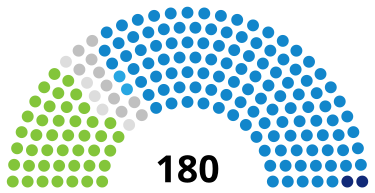 | ||
| Parties and alliances | Seats | |
|---|---|---|
| Liberal Conservative Party (PLC) | 118 | |
| Liberal Party (PL) | 43 | |
| Conservative Union (Silvelist) (UC) | 2 | |
| Traditionalist Communion (Carlist) (CT) | 2 | |
| Independents (INDEP) | 5 | |
| Archbishops (ARCH) | 10 | |
| Total elective seats | 180 | |
| Sources[39][40][41][42][43][44][45][46] | ||
Distribution by group
[edit]| Group | Parties and alliances | C | S | Total | ||
|---|---|---|---|---|---|---|
| PLC | Liberal Conservative Party (PLC) | 279 | 104 | 425 | ||
| Constitutional Union of Cuba (UCC) | 17 | 10 | ||||
| Unconditional Spanish Party (PIE) | 10 | 2 | ||||
| Basque Dynastics (Urquijist) (DV) | 1 | 2 | ||||
| PL | Liberal Party (PL) | 95 | 39 | 154 | ||
| Constitutional Union of Cuba (UCC) | 11 | 3 | ||||
| Unconditional Spanish Party (PIE) | 5 | 1 | ||||
| UC | Conservative Union (Silvelist) (UC) | 11 | 2 | 14 | ||
| Constitutional Union of Cuba (UCC) | 1 | 0 | ||||
| CT | Traditionalist Communion (Carlist) (CT) | 10 | 2 | 12 | ||
| PI | Integrist Party (PI) | 1 | 0 | 1 | ||
| INDEP | Independent Possibilists (P.IND) | 3 | 1 | 11 | ||
| Independents (INDEP) | 1 | 2 | ||||
| Autonomist Liberal Party (PLA) | 0 | 2 | ||||
| Constitutional Union of Cuba (UCC) | 1 | 0 | ||||
| Independent Catholics (CAT) | 1 | 0 | ||||
| ARCH | Archbishops (ARCH) | 0 | 10 | 10 | ||
| Total | 447 | 180 | 627 | |||
Notes
[edit]References
[edit]- ^ "Real decreto aplazando las elecciones de Diputados en Canarias hasta el 19 del corriente" (PDF). Gaceta de Madrid (in Spanish) (103). Agencia Estatal Boletín Oficial del Estado: 113. 12 April 1896.
- ^ "Las elecciones en Canarias". National Library of Spain (in Spanish). La Época. 20 April 1896. Retrieved 31 August 2022.
- ^ "Elecciones en Canarias". National Library of Spain (in Spanish). El Movimiento Católico. 21 April 1896. Retrieved 31 August 2022.
- ^ a b c d Constitución de la Monarquía Española (PDF) (Constitution) (in Spanish). 30 June 1876. Retrieved 19 August 2022.
- ^ "El Senado en la historia constitucional española". Senate of Spain (in Spanish). Retrieved 26 December 2016.
- ^ García Muñoz 2002, pp. 106–107.
- ^ Carreras de Odriozola & Tafunell Sambola 2005, p. 1077.
- ^ García Muñoz 2002, p. 107.
- ^ a b Roldán de Montaud 1999, pp. 280–281.
- ^ a b Ley electoral de los Diputados a Cortes (PDF) (Law) (in Spanish). 28 December 1878. Retrieved 19 August 2022.
- ^ "Real decreto disponiendo la forma en que se han de verificar las elecciones de Diputados á Cortes en las islas de Cuba y Puerto Rico" (PDF). Gaceta de Madrid (in Spanish) (363). Agencia Estatal Boletín Oficial del Estado: 957–964. 28 December 1892.
- ^ a b c Ley electoral para Diputados a Cortes (PDF) (Law) (in Spanish). 26 June 1890. Retrieved 19 August 2022.
- ^ Ley mandando que los distritos para las elecciones de Diputados á Córtes sean los que se expresan en la división adjunta (PDF) (Law) (in Spanish). 1 January 1871. Retrieved 21 August 2022.
- ^ Ley dividiendo la provincia de Guipúzcoa en distritos para la elección de Diputados a Cortes (PDF) (Law) (in Spanish). 23 June 1885. Retrieved 6 May 2023.
- ^ Ley dividiendo el distrito electoral de Tarrasa en dos, que se denominarán de Tarrasa y de Sabadell (PDF) (Law) (in Spanish). 18 January 1887. Retrieved 6 May 2023.
- ^ Ley fijando la división de la provincia de Alava en distritos electorales para Diputados á Cortes (PDF) (Law) (in Spanish). 10 July 1888. Retrieved 6 May 2023.
- ^ "Real decreto disponiendo que mientras no se publique nueva ley Electoral rija en la isla de Cuba la división en circunscripciones y distritos para la elección de Diputados á Cortes aprobada en el Congreso en la forma que se expresa" (PDF). Gaceta de Madrid (in Spanish) (354). Agencia Estatal Boletín Oficial del Estado: 907–908. 20 December 1890.
- ^ "Real decreto declarando subsistente la división territorial para elecciones de Diputados á Cortes en las islas de Cuba y Puerto Rico, establecida por Real decreto de 18 de Diciembre de 1890" (PDF). Gaceta de Madrid (in Spanish) (363). Agencia Estatal Boletín Oficial del Estado: 964. 28 December 1892.
- ^ Leyes aprobando la división electoral de las provincias de León y Vizcaya (PDF) (Law) (in Spanish). 2 August 1895. Retrieved 6 May 2023.
- ^ a b Ley electoral de Senadores (PDF) (Law) (in Spanish). 8 February 1877. Retrieved 19 August 2022.
- ^ Ley dictando reglas para la elección de Senadores en las islas de Cuba y Puerto Rico (PDF) (Law) (in Spanish). 9 January 1879. Retrieved 19 August 2022.
- ^ "Real decreto determinando el número de Senadores que habrán de elegirse en cada una de las provincias con motivo de las próximas elecciones" (PDF). Gaceta de Madrid (in Spanish) (184). Agencia Estatal Boletín Oficial del Estado: 23. 3 July 1881.
- ^ "Real decreto declarando disueltos el Congreso de los Diputados y la parte electiva del Senado; disponiendo que las Cortes se reúnan en Madrid el 11 de Mayo próximo, y que las elecciones de Diputados se verifiquen el 12 de Abril y las de Senadores el 26 del mismo" (PDF). Gaceta de Madrid (in Spanish) (60). Agencia Estatal Boletín Oficial del Estado: 727. 29 February 1896.
- ^ Martorell Linares 1997, pp. 139–143.
- ^ Martínez Relanzón 2017, pp. 147–148.
- ^ "Práxedes Mateo-Sagasta Escolar" (in Spanish). Royal Academy of History. Retrieved 6 September 2022.
- ^ Tone 2006, p. 230.
- ^ "Gamazada". Gran Enciclopedia de Navarra (in Spanish). Retrieved 4 May 2023.
- ^ Núñez Florencio 1993, pp. 545–546.
- ^ López Domínguez 1976, pp. 508–536.
- ^ Armengol i Segú & Varela Ortega 2001, pp. 655–776.
- ^ "Las elecciones". National Library of Spain (in Spanish). La Iberia. 13 April 1896. Retrieved 15 April 2022.
- ^ "Lucha electoral". National Library of Spain (in Spanish). La Unión Católica. 13 April 1896. Retrieved 30 August 2022.
- ^ "Elecciones de diputados". National Library of Spain (in Spanish). La Época. 13 April 1896. Retrieved 30 August 2022.
- ^ "Elecciones de diputados en provincias". National Library of Spain (in Spanish). El Movimiento Católico. 14 April 1896. Retrieved 15 April 2022.
- ^ "Las elecciones". National Library of Spain (in Spanish). El Siglo Futuro. 14 April 1896. Retrieved 31 August 2022.
- ^ "Los diputados electos". National Library of Spain (in Spanish). El Movimiento Católico. 17 April 1896. Retrieved 15 April 2022.
- ^ "Proclamación de diputados electos". National Library of Spain (in Spanish). La Época. 17 April 1896. Retrieved 1 September 2022.
- ^ "Elecciones de senadores". National Library of Spain (in Spanish). La Correspondencia de España. 27 April 1896. Retrieved 15 April 2022.
- ^ "Elecciones de senadores". National Library of Spain (in Spanish). El Liberal. 27 April 1896. Retrieved 15 April 2022.
- ^ "Elección de senadores". National Library of Spain (in Spanish). El Imparcial. 27 April 1896. Retrieved 15 April 2022.
- ^ "Elecciones de senadores". National Library of Spain (in Spanish). La Unión Católica. 27 April 1896. Retrieved 15 April 2022.
- ^ "Los resultados de Puerto Rico". National Library of Spain (in Spanish). La Unión Católica. 27 April 1896. Retrieved 8 September 2022.
- ^ "Senadores de Ultramar". National Library of Spain (in Spanish). La Correspondencia de España. 28 April 1896. Retrieved 15 April 2022.
- ^ "Senadores por Cuba". National Library of Spain (in Spanish). La Iberia. 28 April 1896. Retrieved 9 September 2022.
- ^ "Elección de senadores". National Library of Spain (in Spanish). La Dinastía. 29 April 1896. Retrieved 15 April 2022.
Bibliography
[edit]- Fernández Almagro, Melchor (1943). "Las Cortes del siglo XIX y la práctica electoral". Revista de Estudios Políticos (in Spanish) (9–10): 383–419. ISSN 0048-7694. Retrieved 16 December 2020.
- López Domínguez, José María (1976). Elecciones y partidos políticos de Puerto Rico: 1809-1898 (PDF) (Thesis) (in Spanish). Vol. 1. Puerto Rico: Complutense University of Madrid. Retrieved 11 September 2022.
- Núñez Florencio, Rafael (1993). "Los republicanos españoles ante el problema colonial: La cuestión cubana (1895-98)". Revista de Indias (in Spanish). 53 (198): 545–561. doi:10.3989/revindias.1993.i198.1146. ISSN 0034-8341. Retrieved 6 September 2022.
- Martorell Linares, Miguel Ángel (1997). "La crisis parlamentaria de 1913-1917. La quiebra del sistema de relaciones parlamentarias de la Restauración". Revista de Estudios Políticos (in Spanish) (96). Madrid: Centro de Estudios Constitucionales: 137–161.
- Martínez Ruiz, Enrique; Maqueda Abreu, Consuelo; De Diego, Emilio (1999). Atlas histórico de España (in Spanish). Vol. 2. Bilbao: Ediciones KAL. pp. 109–120. ISBN 9788470903502.
- Roldán de Montaud, Inés (1999). "Política y elecciones en Cuba durante la restauración" (PDF). Revista de Estudios Políticos (in Spanish) (104): 245–287. Retrieved 19 December 2020.
- Armengol i Segú, Josep; Varela Ortega, José (2001). El poder de la influencia: geografía del caciquismo en España (1875-1923) (in Spanish). Madrid: Marcial Pons Historia. pp. 655–776. ISBN 9788425911521.
- García Muñoz, Montserrat (2002). "La documentación electoral y el fichero histórico de diputados". Revista General de Información y Documentación (in Spanish). 12 (1): 93–137. ISSN 1132-1873. Retrieved 13 September 2020.
- Carreras de Odriozola, Albert; Tafunell Sambola, Xavier (2005) [1989]. Estadísticas históricas de España, siglos XIX-XX (PDF) (in Spanish). Vol. 1 (II ed.). Bilbao: Fundación BBVA. pp. 1072–1097. ISBN 84-96515-00-1. Archived from the original (PDF) on 24 September 2015.
- Tone, John Lawrence (2006). "The Monster and the Assassin". War and Genocide in Cuba, 1895-1898. University of North Carolina Press. pp. 225–239. ISBN 9780807830062.
- Martínez Relanzón, Alejandro (2017). "Political Modernization in Spain Between 1876 and 1923". Annales Universitatis Mariae Curie-Sklodowska, sectio K. 24 (1). Madrid: Maria Curie-Skłodowska University: 145–154. doi:10.17951/k.2017.24.1.145. S2CID 159328027.

